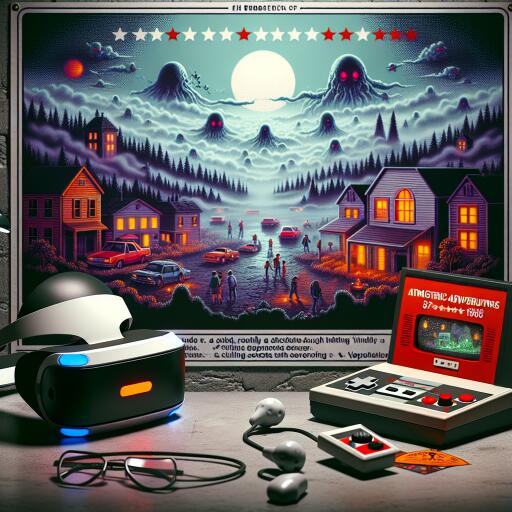Embarking on a Villainous Journey in Stranger Things VR
Diving into the world of Hawkins and the enigmatic Upside Down, Stranger Things VR introduces a captivating chapter into the saga, this time through the eyes of Vecna. This dark character’s quest against Eleven and the townsfolk unfolds in a virtual reality experience crafted by Tender Claws, promising a blend of familiar lore and new adventures tailored for the series enthusiasts.
Embarking as Vecna allows a unique exploration of his intricate past and motivations, setting the stage for an immersive gameplay experience. Despite being tailored for fans, the game’s inventive premise opens the door to a broader audience keen on unraveling the mysteries lurking within.
The atmospheric essence of the Upside Down is one of the game’s highlights, drawing players deep into its haunting realm. The art of walking in Vecna’s shoes—wielding telekinetic powers to manipulate the environment and overcome obstacles—stands out, showcasing the potential of VR motion controls. Whether it’s manipulating objects from afar or navigating the world with supernatural tendrils, the sense of power and freedom is palpable.
On the visual and auditive front, the game impresses with its stylized design and meticulous adherence to the show’s aesthetic. The cel-shaded visuals add a layer of surreal beauty to the eerie setting of the Upside Down, complemented by character designs and locales that fans will find delightfully familiar. The soundscape, punctuated by ominous effects and the series’ signature synthesizer themes, wraps the experience in an immersive aura that is both nostalgic and fresh.
However, the journey is not without its pitfalls. The thrill of mind invasions and combat starts strong but begins to wear thin due to repetitive scenarios and similar challenges dotting the gameplay landscape. The narrative, too, struggles with its pacing and coherence, sometimes leaving players feeling detached from the unfolding story.
The incorporation of mixed reality levels, a concept ripe with possibility, regrettably falls short. These segments, intended to meld the virtual with the “real”, instead falter, lacking in engagement and failing to mesh convincingly with the primary narrative. This misstep represents a squandered chance to capitalize on one of VR’s most intriguing aspects, leaving a sense of what might have been.
In sum, Stranger Things VR marks a valiant effort by Tender Claws to marry the iconic series with the immersive world of virtual reality. While it successfully captures the atmosphere and spirit of Stranger Things coupled with the intrigue of exploring it through Vecna’s eyes, the experience is marred by gameplay repetitiveness and narrative inconsistencies. Fans may find joy in the novel perspective and familiar setting, but as a standalone VR venture, it struggles to deliver a fully rounded and satisfying experience.









